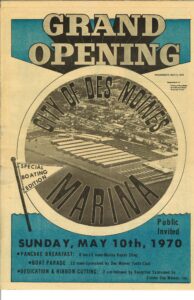 When we talk about ‘the Marina’, we’re really discussing two things: a core business serving boaters since 1970, and the larger public space that business makes possible – including our Beach Park, Fishing Pier and every other waterfront amenity both now and into the future. I want to address some important questions about that waterfront as a whole, particularly regarding a Dry Stack proposal that may be new to you, but was planned many years ago, and our City’s overall financial sustainability.
When we talk about ‘the Marina’, we’re really discussing two things: a core business serving boaters since 1970, and the larger public space that business makes possible – including our Beach Park, Fishing Pier and every other waterfront amenity both now and into the future. I want to address some important questions about that waterfront as a whole, particularly regarding a Dry Stack proposal that may be new to you, but was planned many years ago, and our City’s overall financial sustainability.
First, one way or another, the Marina has always had a significant impact on the entire City budget. Yes, it’s a standalone business, but for many years, it actually provided a large source of ongoing revenue to the City – at the expense of maintaining its own reserve for future repairs and upgrades. Think of it like taking profits from a business without saving for equipment replacement. That was irresponsible. Worse, over time, revenue opportunities were avoided.
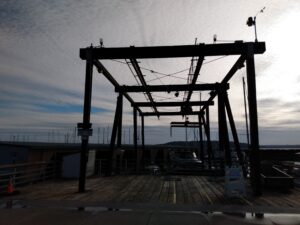
The net effects are two-fold:
- It left the business vulnerable. When repairs are needed, like the small boat launch which failed in 2022, there is no money.
- It also created an unnecessary financial burden on all our residents, starting with the north bulkhead replacement in 2017, continuing with the 2023 bond purchases and, still over $81,000,000 in work left to do by 2040! And with the current rate of inflation that real cost, which is only fifteen years away, will be well over $100,000,000. Unfortunately, the City has no more borrowing capacity for many years to come. Oops.
But we can’t simply walk away from the Marina, we can’t give it back, and with those kinds of maintenance costs, we likely could not sell it. (Nor would we want to, of course.) Our challenge is making that business, which is really the source of the entire waterfront, truly sustainable.
Let me explain what I mean by sustainable. Think of the Marina like your house. Just making the monthly payments is not enough. You need to save for that new roof you’ll need in 15 years, or the stove that will eventually break down. If you can’t save for these predictable expenses, or are unable to borrow in a manner you can afford to repay, you’re living beyond your means. That’s exactly where we’ve been with the Marina for decades.
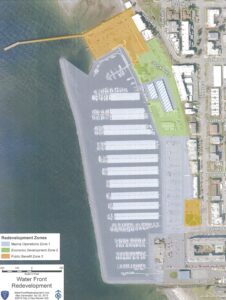 Something to think about: In 2017, the City formalised the long term planning vision by creating a separate Waterfront Zone (orange). This might seem like a technical detail, but this separate ‘public zone’ meant that we were taking out a line of credit to pay for the north bulkhead replacement — debt paid by all 33,000 residents – not just boat owners. While some might argue that a ‘public’ seawall should be everyone’s responsibility, with proper revenue generation, the Marina could also have paid for a lot of that — and freed up millions of dollars for services all residents need – including police, roads, parks, etc.
Something to think about: In 2017, the City formalised the long term planning vision by creating a separate Waterfront Zone (orange). This might seem like a technical detail, but this separate ‘public zone’ meant that we were taking out a line of credit to pay for the north bulkhead replacement — debt paid by all 33,000 residents – not just boat owners. While some might argue that a ‘public’ seawall should be everyone’s responsibility, with proper revenue generation, the Marina could also have paid for a lot of that — and freed up millions of dollars for services all residents need – including police, roads, parks, etc.
This brings us to Dry Stack. The term may be new to you, but it was actually first planned for in 1999 as a replacement for the current dry sheds – all of which are now past end of life. Dry stack is not just boat storage. Think of it like a valet parking service for boats. There’s a climate-controlled building where your boat is stored, and when you want to use it, you call ahead and it’s waiting for you in the water. Better for boats, better for owners, and significantly more profitable for the Marina.
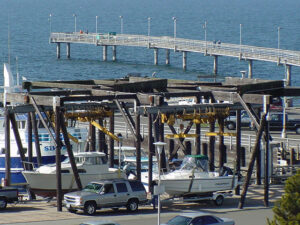 Some people will be concerned as to aesthetics. Perhaps this bit of Marina history might put this in perspective. Remember the ‘Sling Launch’ we removed in 2008? Because it had always been there, and because it was clearly performing a core Marina function – launching boats for money – people accepted and embraced it as part of the landscape. When we removed it, that was the right thing to do because so few people were using it. It was losing a ton of money – not because of aesthetics. Since it’s been gone now for fifteen years, some people would probably scream if it suddenly reappeared. People get used to things being a certain way.
Some people will be concerned as to aesthetics. Perhaps this bit of Marina history might put this in perspective. Remember the ‘Sling Launch’ we removed in 2008? Because it had always been there, and because it was clearly performing a core Marina function – launching boats for money – people accepted and embraced it as part of the landscape. When we removed it, that was the right thing to do because so few people were using it. It was losing a ton of money – not because of aesthetics. Since it’s been gone now for fifteen years, some people would probably scream if it suddenly reappeared. People get used to things being a certain way.
Dry stack would likely be located where the dry sheds are now. Yes, it’s a change, but like the Sling Launch, it’s a core Marina function – storing and launching boats for revenue. And we’re talking about a lot of revenue – enough to generate some of the sustainable income we desperately need. We simply need to reset expectations to what the Marina was always meant to have. The entire community needs and deserves this revenue. Full stop.
 The Marina Plans from 1999 until 2015 made sense because they balanced public access with financial sustainability: keep the north section (orange) public with its amazing views, develop the center (green) for commercial uses like the Quarterdeck, and leave the rest (gray) – where the dry sheds are – for the core business – boating revenue. The dry stack would only replace the existing sheds, in an area always set aside for boaters, not impinge on any other uses or public space.
The Marina Plans from 1999 until 2015 made sense because they balanced public access with financial sustainability: keep the north section (orange) public with its amazing views, develop the center (green) for commercial uses like the Quarterdeck, and leave the rest (gray) – where the dry sheds are – for the core business – boating revenue. The dry stack would only replace the existing sheds, in an area always set aside for boaters, not impinge on any other uses or public space.
Instead, the Council has repeatedly delayed the dry stack in favor of other possibilities – a hotel, the Marina Steps project, etc. These alternatives are often promoted by promising tens of thousands of tourists. Maybe someday. But meanwhile, Marina infrastructure continues to deteriorate and we have no plan to pay for it. And that will end up affecting every resident of Des Moines for years, whether they use the Marina or not.
I’ve used the Marina for three decades. I brought my kids to the Beach Park countless times. No one has derived more enjoyment from this space than my family. That’s precisely why I’m fighting so hard to protect its future. We had a good plan 25 years ago. It’s time we finally follow it.
If I had to sum this up in one key point, it would be this:
Everything the Marina can pay for it absolutely should pay for. The business must be optimized for the revenue it needs to be sustainable – not because we don’t value beauty or public access, but because the more money the Marina makes, the less taxpayers will need to pay — and the more services we can provide for everyone in Des Moines.
Our failure to implement that strategy has cost all our residents millions of dollars over the years. If we change course now, we can make those same millions available to benefit every service we provide, from police to parks to roads – and we can do this forever.
This isn’t a choice between boats or views or tourism. It’s about balance – making responsible decisions that benefit our entire community for generations to come. Thank you for your attention to this crucial issue.
1With fair rates to customers, of course. Our rates for all services have been among the best on the entire West Coast. Don’t start. 😀
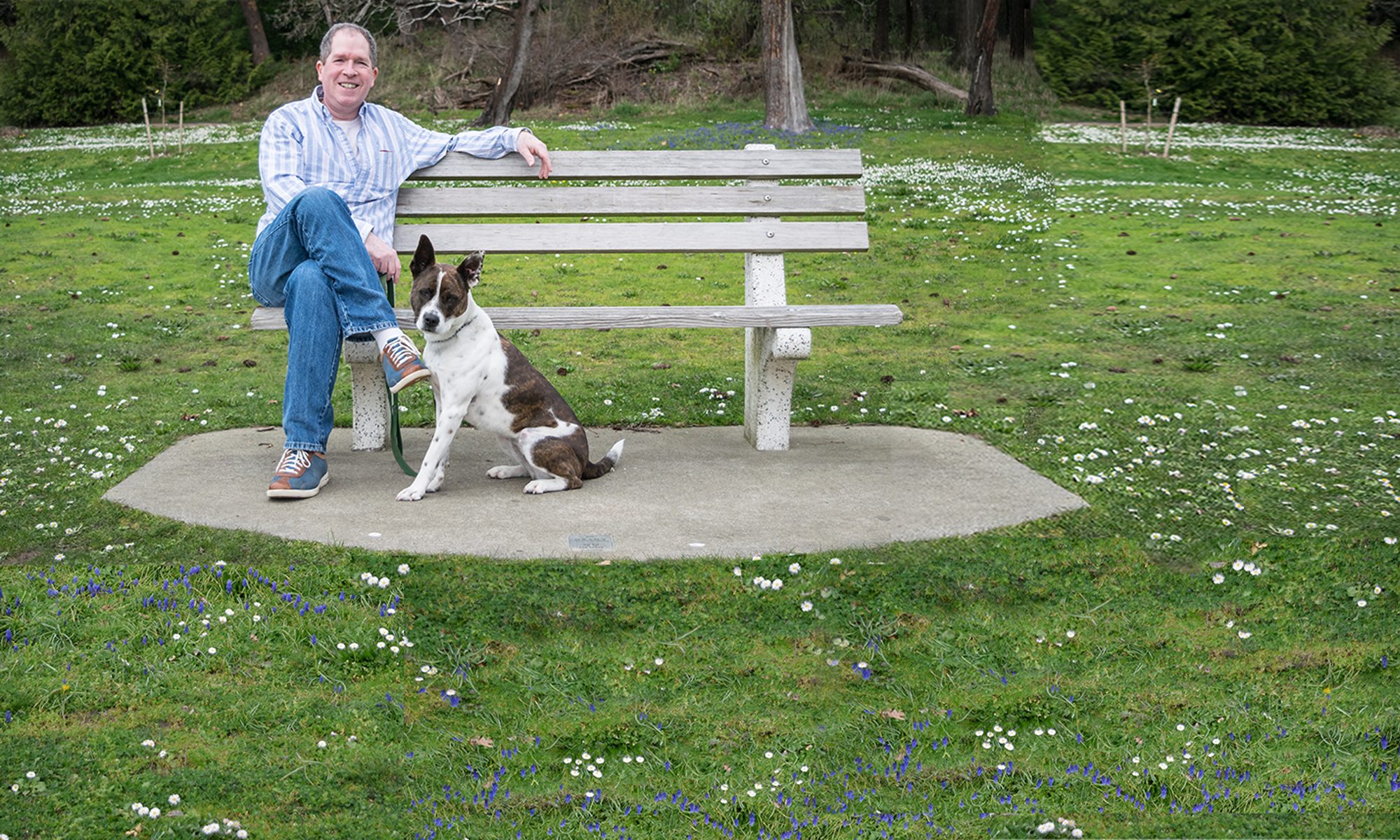

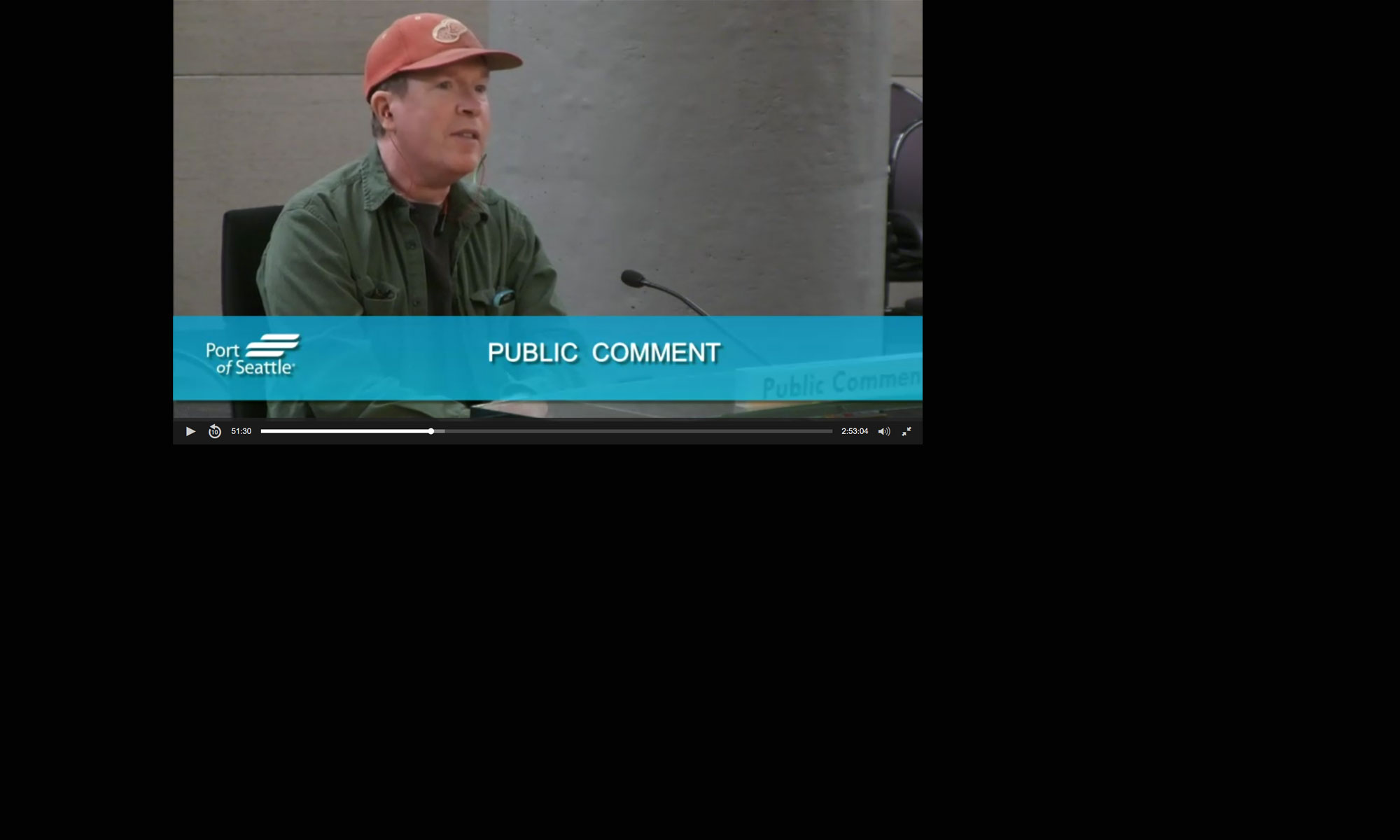
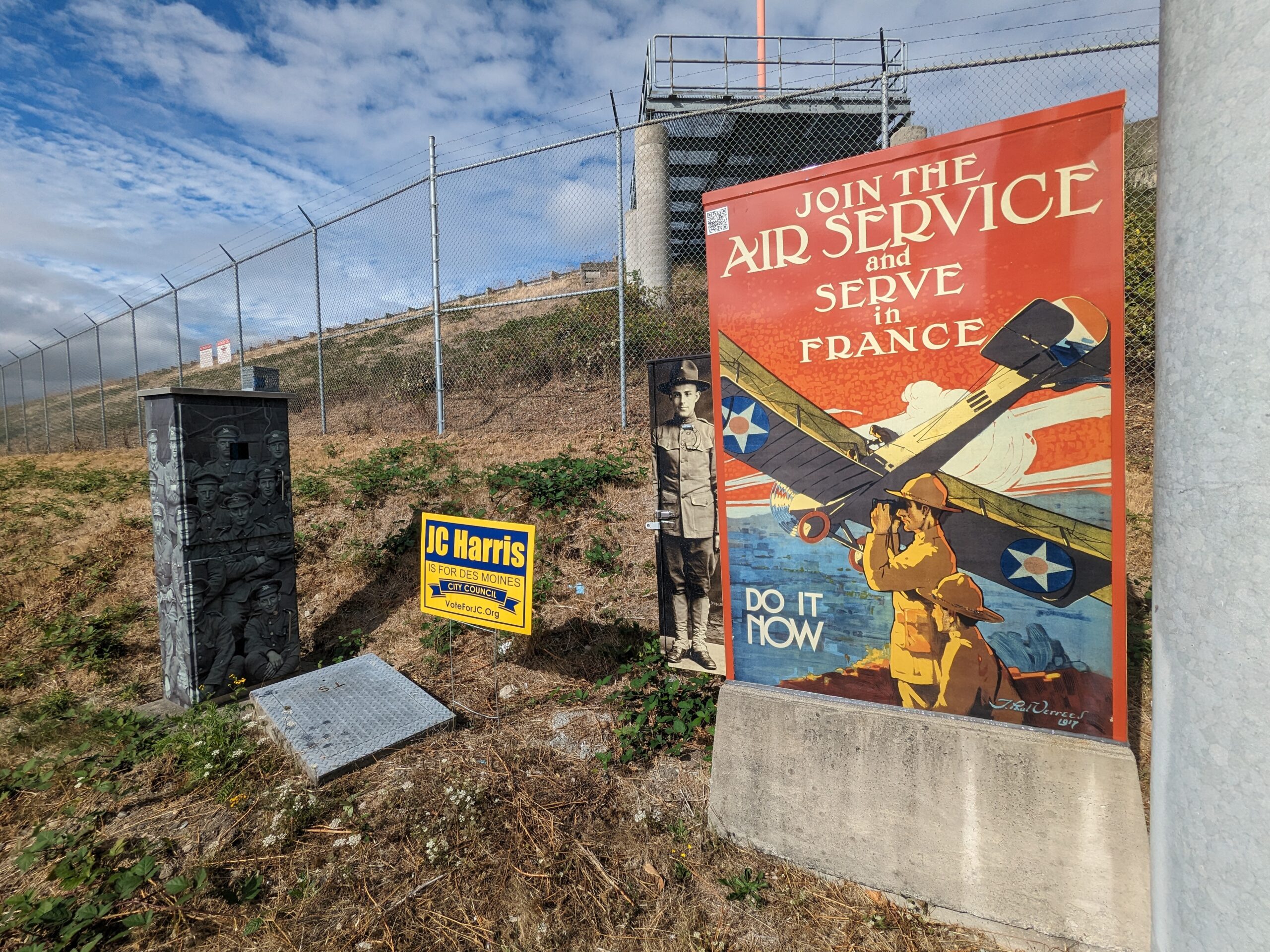
Let’s start & continue doing the best right next most needed & reliable income producing thing to do & start JUST DOING IT‼️